
Built circa 1883 by Elmer W. Chaffee. Chaffee was a Plymouth merchant who became one of the earliest investors and was actively involved with the operation of the Markham Air Rifle Company. The Markham Company was the first company in the world to invent and commercially manufacturer Air Rifles and it all started right here in Plymouth, Michigan. Elmer had this home built within a short walking distance of the Markham Air rifle Company which was located at 304 N. Main Street (still standing today). Born here in 1851 Elmer had literally been a lifetime Plymouth resident who passed away in 1899 and is buried at Plymouth’s Riverside cemetery he is buried along the side of his wife Ella (1854-1946). After Elmer’s death, Ella moved to 815 Church Street and this home at 217 Main Street ironically became a funeral home which serviced the Plymouth community under a couple of different names in the 1900s. First known as the Edward F. Wilkie funeral home then the Karl J. Sonderegger funeral home it is still used for commercial purposes today. As seen in the photo, the home is still very much in tact but now has a commercial facade.
Below is the front page obituary from the Plymouth Mail Newspaper from June 1899:
PLYMOUTH MOURNS THE LOSS OF AN ESTEEMED CITIZEN AND EXEMPLARY BUSINESS MAN.
Elmer W. Chaffee Died at His Late Home on Tuesday, June 6th.
Seldom in the history of Plymouth has the dark pall of the shadow if death fallen so heavily upon the community as that caused by the death of Mr. Elmer W. Chaffee which occurred at his residence on Main street, Tuesday afternoon, June 6th, 1899.
Although Mr. Chaffee had not been in good health for several years, he felt so much better during the winter and spring that his family and friends thought he would overcome his predisposition to pneumonia and lung trouble and cheer them with his presence for many years, but on Monday, May 29th, he had a severe attack of pleurisy followed by typhoid fever and though receiving the very best of medical treatment and nursing, he passed peacefully away in quiet sleep after a week’s illness.
Elmer Wadsworth Chaffee was born in Plymouth Township, April 19, 1851. His father, Elmer W. Chaffee, who died in 1853, owned a farm on the town line between Plymouth and Canton, just south of the farm now owned by Chas. Bradner in the south eastern part of Plymouth.
On this farm, under the careful training of his excellent widowed mother, supplemented by a liberal education received at the Plymouth high school then under the superintendency of Charles A. Frisbee, Mr. Chaffee early imbibed those high ideals of rectitude, those strict principles of honesty and integrity, and those generous and kindly impulses, which, all through the forty-eight years of his life made him the genial companion, the trusted friend, the ideal business man, and the generous and lovable neighbor.
In 1876, at the age of 25, Mr. Chaffee left the farm to take the position of clerk in the drug and grocery house of John L. Gale with whom he remained until 1880 when he formed a partnership with Cyrus A. Pinckney and purchased the store of the late A. B. Coleman, who at that time retired from business.
In 1877 he became associated with W. F. Markham in the manufacture of air rifles and continued in this business until his death. He was also at the head of the drug and grocery firm of Chaffee & Hunter from 1888 to 1893 and of Chaffee, Hunter & Lauffer from 1893 to 1895, although he gave but little of his time and attention to the affairs of the firm.
In politics, Mr. Chaffee was a republican and though in no sense a politician, he held several positions of trust in the village and township, with honor to himself and credit to the community. At the time of his death he was a member of the School Board, Vice-President of the First National Exchange Bank of Plymouth and Treasurer of the Plymouth Fair Association.
In 1890 Mr. Chaffee was united in marriage to Miss Ella C. Smith, of Novi, who survives him. He also leaves a mother, to whom he was devotedly attached and who is now in her eighty-sixth year, also three brothers, Albert W. who resides at Wayne, Alfred W., a citizen of Plymouth and Theodore W., of Pontiac.
All business places in the village were closed during the funeral services, which were held Thursday afternoon from his late residence, conducted by the Rev. J. H. Herbener, of the Presbyterian church, assisted by Rev. J. B. Oliver, of the M. E. church. Dr. Edward B. Spalding, of Detroit, sang without accompaniment the beautiful solos, “Lead Kindly Light” and “There Is a Calm for those who Weep”.
The remains were interred in Riverside cemetery and placed in the last resting place by Messrs. W. F. Markham, Frank Polley, C. A. Pinckney. W. O. Allen, Jno. L. Gale and O. A. Fraser, who acted as pallbearers, attended by nearly seventy-five workmen from the air rifle shops, who in a body paid their last tribute of respect to their late employer for whom they sincerely mourned.
Plymouth has lost many good men in the past, but none with more friends and fewer enemies than had Elmer W. Chaffee.
~ The Plymouth Mail – Plymouth, Michigan – Friday, 9 June 1899
Below is a photo of 217 N Main Street in the 1950s:

Photo courtesy of the Plymouth Historical Museum.


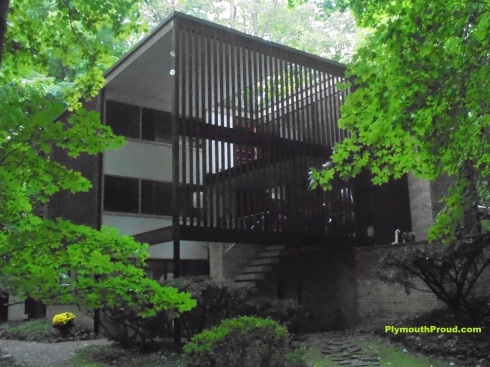


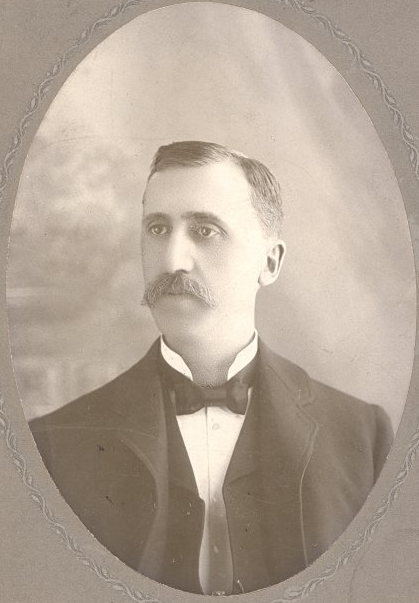


























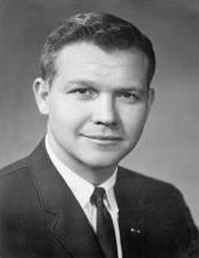
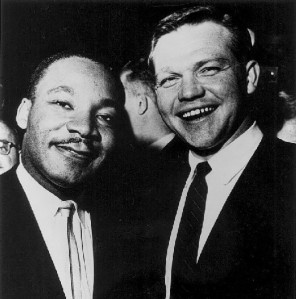


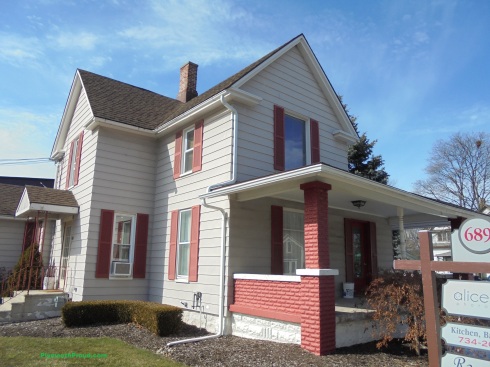









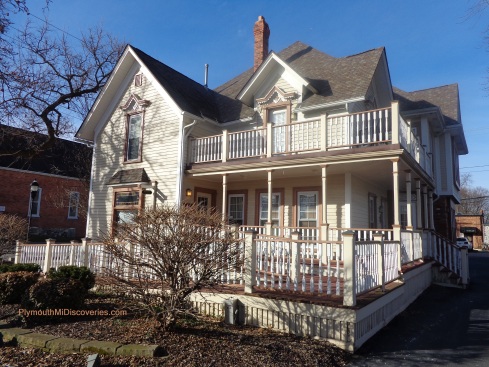









Recent Comments